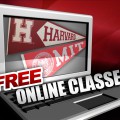 It was a surprise that took the music industry by storm. Right after midnight on Dec. 13, 2013, a new Beyoncé album, complete with videos, was released with no advance warning.
It was a surprise that took the music industry by storm. Right after midnight on Dec. 13, 2013, a new Beyoncé album, complete with videos, was released with no advance warning.
Releasing a surprise album is almost unheard of, with no marketing or publicity before the release and none of the songs or videos leaked to the Internet before the album made its sneaky debut. The move was so bold, it prompted Anita Elberse, a business administration professor at Harvard Business School, to create a case study examining the impact of the unique business strategy.
Though the self-titled album sold very well, with 617,000 copies sold in three days and a No. 1 spot on the Billboard 200 chart, the Harvard study is going to look at little closer at the potential long-term effect of the unorthodox release.
Elberse and one of her former students, Stacie Smith, co-wrote the case study which will be studied by Elberse’s upcoming class, “Strategic Marketing in Creative Industries.”
Some of the factors that the Harvard students can expect to examine in the course are:
- Does such a bold strategy require a superstar to pull off?
- What do record companies do to market artists and create partnerships for them?
- What effects did this album have on Beyoncé’s future tours?
- What effects will this album have on her next release?
- How did Beyoncé’s album impact fans?
- How did Beyoncé’s album impact the companies that were not part of the album launch?
Several retailers, including Amazon and Target, boycotted Beyoncé’s album since they didn’t get to participate in the release during the iTunes-exclusive first week of sales.
The surprise release wasn’t the only new element of the album. It also was released as a whole “visual album.” That means the songs were a package deal, with no option for purchasing singles, and that the album came with 14 songs and 17 complementary videos.
“I think most people regard this release as a huge success artistically, and I am among them. But whether it was worth it from a business perspective is for the students to figure out,” said Elberse.





